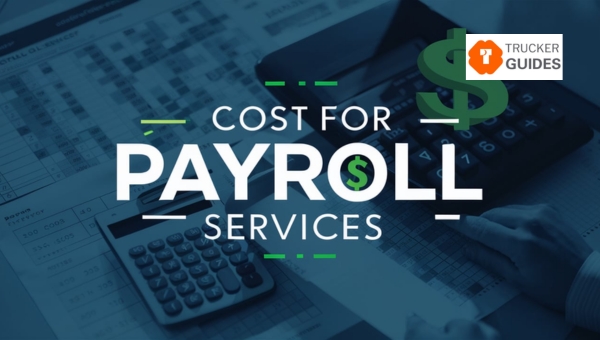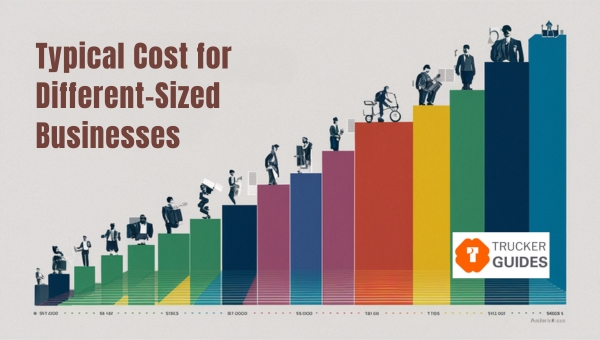Cost for Payroll Services in 2024 [What You Need to Know]


Cost for payroll services can feel overwhelming, but don’t worry; I’m here to help! This article dives into everything you need to know about payroll pricing structures, the factors that influence costs, and practical tips for reducing expenses.
I’ll also compare in-house payroll management versus outsourcing to ensure you make the best choice for your business. Stick around and unlock the secrets to optimizing your payroll expenses!
Here are the official webpage links for each of the payroll service providers mentioned in the table:
Payroll services might seem daunting at first, but understanding the basics can empower any business owner or manager to make informed decisions. Payroll services encompass a variety of tasks essential to managing employee compensation.

These tasks include processing employee paychecks, calculating and withholding taxes, and ensuring compliance with state and federal regulations. Essentially, payroll services handle all aspects of paying your employees accurately and on time.
They offer a systematic approach to handling payroll efficiently, using specialized software and expertise to streamline the process. One of the primary advantages of using payroll services is the reduction of administrative burden.
The number of employees is the key factor influencing payroll service costs. Let’s examine how increasing headcount impacts the pricing of a typical “standard” payroll service plan offered by three leading providers.
| Payroll Service Provider | Free Trial | Starting Price | Price Range |
|---|---|---|---|
| OnPay | 30 days | $40 plus $6 per employee per month | $40 plus $6 per employee (fixed price) |
| Gusto | 30 days | $40 plus $6 per employee per month | Contact for quote |
| ADP Run | Three months | $40-plus per month, depending on company size and needs | Contact for quote |
| Paychex Flex | No | $39 plus $5 per employee per month | Contact for quote |
| Justworks | No | $59 per month (for up to 49 employees) | $99 per month (for up to 49 employees) and $89 per month (for 50 or more employees) |
| TriNet | No | Contact for quote | Contact for quote |
| Wave Payroll | 30 days | Varies by state | Varies by state |
| Deluxe | 14 days | $99 plus $5 per employee per month | Contact for quote |
| Paycor | No | $45 plus $7 per employee per month | $45 plus $14 per employee per month |
Also Read: 8 Best Alternative Business Loans
When it comes to understanding the cost for payroll services, you might find that different providers have different pricing models.

Each model has its unique way of structuring fees, which can impact your business budget in various ways. Below, we’ll explore some common payroll pricing structures to help you make an informed decision.
The Per Employee Per Month (PEPM) pricing model is straightforward and widely used. In this structure, you’ll be charged a set fee for each employee every month. This model’s simplicity makes it attractive for businesses of all sizes.
Another common pricing model is the Per Pay Cycle structure. Here, you are charged each time you process payroll, regardless of the number of employees.
This model can make budgeting a bit tricky, as costs will vary depending on how often you run payroll. For instance, if you pay employees bi-weekly, you’ll incur charges twice a month.
This model suits businesses with less frequent payroll runs, helping them manage costs more effectively.
The Annual Fee pricing model charges a lump sum once a year for payroll services. This can be a convenient option for businesses that prefer to handle expenses in one go rather than dealing with monthly or per-pay-cycle charges.
The Base Fee + Per Employee pricing structure combines a fixed base fee with an additional charge for each employee. This hybrid model offers a balance between predictability and scalability.
For example, a service might charge a $100 base fee plus $5 per employee. If you have 20 employees, your total monthly cost would be $200.
Also Read: Business Term Loans [A Guide to Financing Your Growth]
The cost of payroll services requires looking at various factors that can influence pricing. From the number of employees to the complexity of compliance, each aspect plays a critical role.

Let’s dive into these factors to see how they impact payroll service costs.
Company size and complexity significantly influence payroll service costs. Larger organizations often require more intricate payroll management due to a higher number of employees, diverse pay structures, and additional compliance needs, leading to increased processing time and associated expenses.
The frequency of payroll processing directly impacts costs for businesses. Companies that run payroll weekly or bi-weekly may incur higher fees compared to those processing monthly.
Increased frequency requires more resources and administrative effort, leading to additional expenses for payroll service providers to manage and execute timely payments efficiently.
The number of employees significantly affects payroll service costs. Larger workforces require more extensive management, leading to increased processing time and complexity.
As the employee count rises, payroll service providers often charge higher fees to accommodate additional tasks, such as tax calculations, compliance, and reporting for each individual
Geographical location significantly influences payroll costs due to variations in cost of living and labor market rates. Companies often adjust salaries based on local economic conditions, ensuring fairness for employees in high-cost areas.
This approach helps attract and retain talent while maintaining competitive compensation structures across diverse regions.
Compliance requirements are critical in determining payroll service costs. Businesses must adhere to various federal, state, and local regulations regarding employee wages, tax withholdings, and reporting. Non-compliance can result in severe penalties, including fines and legal issues.
The complexity of these regulations often necessitates specialized payroll services, increasing overall costs. Regular updates and audits are essential to maintain compliance and avoid costly mistakes that could jeopardize the organization’s financial stability.
The level of service required significantly impacts payroll service costs. Basic payroll processing typically incurs lower fees, while comprehensive packages including tax compliance, HR support, and employee benefits management are more expensive.
Businesses must assess their specific needs to choose a service level that balances cost with essential features and support.
Technology and software infrastructure significantly affect payroll service costs. Businesses using cloud-based payroll systems benefit from predictable expenses and reduced hidden costs compared to traditional systems.
Advanced software can streamline processes, enhance compliance, and improve efficiency, but may also require higher initial investments for setup and ongoing maintenance, impacting overall payroll expenditures.
When considering payroll services, it’s essential to understand that the costs can vary significantly based on the size of the business.

Here’s a detailed breakdown of typical payroll service costs for small, medium, and large businesses.
Also Read: Drafting a Debt Collection Letter [Key Tips Revealed]
When it comes to managing payroll, businesses often face a choice between handling it in-house or outsourcing it to a payroll service provider. Let’s delve into the costs and benefits of each option.
| Aspect | In-House Payroll | Outsourced Payroll |
|---|---|---|
| Cost per Employee | Higher due to salaries, software, and indirect costs. | Generally lower; $5-$10 per employee per payroll. |
| Monthly Salary Costs | Approx. $1,191.70 (for 50 employees) | $541 (low) to $1,083 (high) |
| Software Expenses | $55/month for accounting software | Included in the service fee |
| Indirect Costs | Approx. $252.50/month for training and onboarding | Not applicable; no need for additional staff |
| Control and Flexibility | Greater control over payroll processes and data | Less control; dependent on the provider’s systems |
| Compliance Management | Requires constant updates and monitoring | Provider handles compliance and updates |
| Time Commitment | Significant time investment for processing | Saves time; allows focus on core business activities |
| Error Risk | Higher potential for errors without expertise | Reduced errors due to professional management |
| Scalability | May require additional resources as the company grows | Easily scalable with business growth |
Also Read: 8 Best Time Tracking Software You Need
The cost of payroll services is crucial for any business, regardless of size. With various pricing models and factors influencing the overall expense, it’s essential to evaluate each option carefully.
By considering the number of employees, payroll frequency, geographic location, and the level of service required, you can choose the most cost-effective plan tailored to your business needs.
Regularly assessing your payroll services and exploring automation can also help lower costs and improve efficiency.